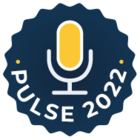I’m seeing more and more organizations put the importance on digital led segmentation as they go into the end of the year. It is important to focus on digital led strategy to plan for durable growth over the next few years. The question I’m seeing get raised is “How do we transition customers into a digital led/digital first program?”
This question is one I faced last year as we were building out our segmentation. The hard part was I couldn’t find many resources on how to do this. However, I did have some great conversations with people at organizations who had to make changes to customer engagement models (high touch to mid touch, changing CSMs). We took some of these best practices and applied them to our approach.
Determining when to transition customers
There are three ways we identified when customers should move engagement models:
- Evaluate their current engagement - Look back at the data you have. Which customers meet the criteria for the new engagement model you are moving them to? The first phase of customers to move are the ones that are already engaging at the rate of the new engagement model. For example, if your new engagement model says you won’t have standing meetings, find the customers who are not having recurring meetings. Move these customers first.
- Stakeholder/Resource Change - When the stakeholder at your customer changes, this is a great time to reset expectations of what your engagement model will look like for them. Additionally, if you are seeing turnover in CSM on your side, this is also a great time to make the change. Position the new engagement model as a benefit to the customer. Example: “To provide stability to you and your team, we have a team of experts to support you moving forward.”
- Renewal Event - When you are going into renewal conversations, set the expectation about what engagement will look like moving forward. This will allow for a conversation around how they will be able to access resources in the coming year.
Sometimes you don’t have time to make it through all of these steps to move customers. You might have to move quicker. If you do, consider what the customer needs and how to ensure success for them and you as you move through these changes.
How to transition customers
When we were moving customers through this transition, we approached the process in a few steps:
- Identify the customers to move.
- Break them into phases.
- Create an email to notify the customer of the change. Important: Include a resource packet detailing what resources they now have available to them.
- Offer to meet with any customer who has questions
Most importantly, be prepared to iterate. To me, this is why doing this in phases is important. You will learn what resonates, what needs to change, and where you might need to evaluate new criteria.
---------
Have you gone or are going through this process? What are some considerations you are making? What learnings would you share with those who need to make an engagement change?





